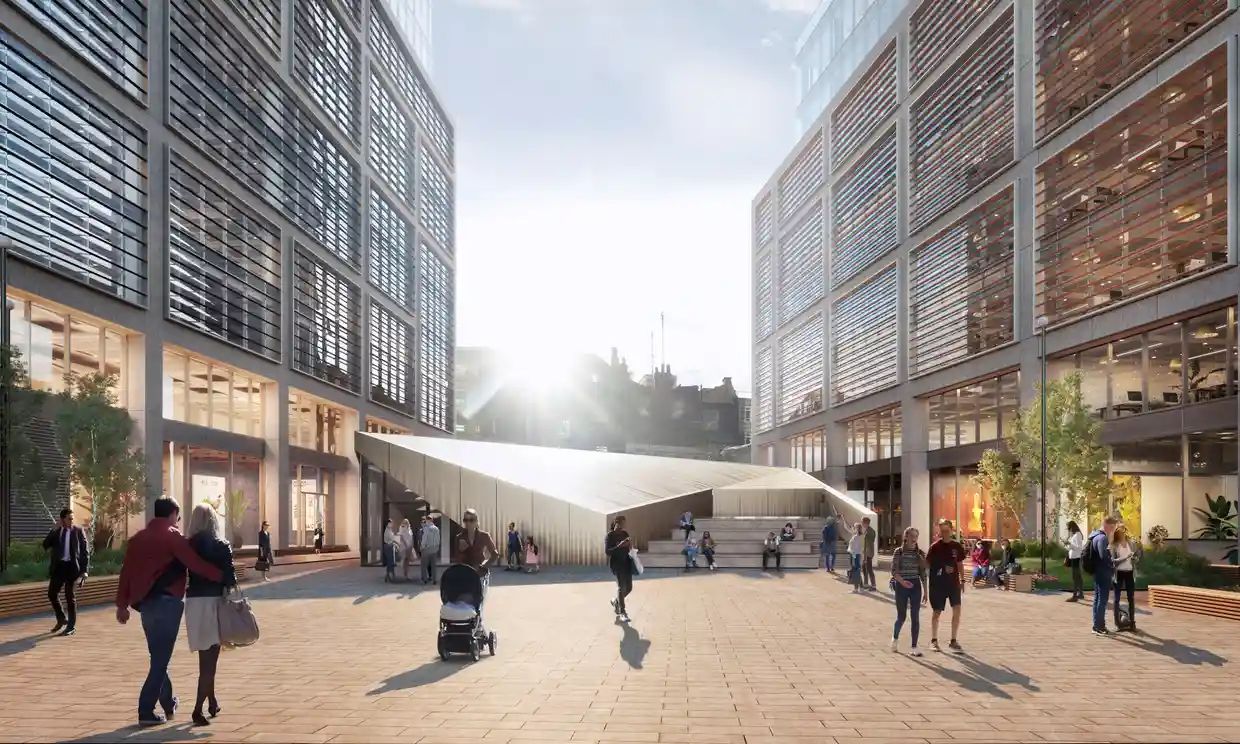Museum of Shakespeare in Shoreditch to open in 2024 on site of playhouse that staged earliest performances
A London museum installation that uses the latest AI technology will allow theatre lovers to walk across the Elizabethan stage where Shakespeare performed as an actor and that may have staged the first performances of Romeo and Juliet and Henry V.
The Museum of Shakespeare is due to open in spring 2024 within the remains of the Curtain Playhouse, one of London’s earliest theatres. Based in Shoreditch, the playhouse was a social and cultural centre during Shakespeare’s time, hosting a variety of activities from plays to fencing matches.
An archaeological excavation of the site between 2011 and 2016 revealed its remains, with the Museum of Shakespeare now making them publicly accessible for the first time, enabling scholars and the public to learn more about the location and its history.
Set in the year 1598 and located 3 metres underground, the museum will retell the life of Shakespeare through “dynamic experiences, innovative theatrical technology and archaeological discoveries”, organisers said. The museum experience will include original objects alongside multi-sensory experiences and a chance to walk on the stage where Shakespeare presented his plays.
Standing over the remains of the stage will be a projected reconstruction of the playhouse, which will allow visitors to stand in the heart of the theatre experience “whilst AI technology will place guests in animated performances and scheduled workshops”, the museum said.
Heather Knight, senior archaeologist at Museum of London Archaeology, said: “Leading the excavations on the site of the Curtain, one of London’s earliest and longest-lived playhouses that have transformed our understanding of early modern performance, has been an immense privilege and I am very much looking forward to the next chapter in the history of the Curtain.”
The Curtain Playhouse, which opened in 1577, is the largest and longest-standing of the early-Elizabethan playhouses and would have held about 1,400 visitors at a time. It was the main venue for Shakespeare’s company before the Globe was built and was home to Shakespeare’s earliest performances – Romeo and Juliet and Henry V are believed to have been first performed there.
When its foundations were excavated, a long stretch of the back wall of the stage proved that the theatre had in fact been rectangular, not the “wooden O” of the famous prologue to Henry V. The length (14 metres) is thought to have allowed for lots of movement, which made it ideal for hosting plays with big fight scenes.
Knight previously told the Guardian that the remains of the Curtain were the best preserved of all the Shakespeare theatres the team had excavated. Several brick walls up to 1.5 metres (4ft 9in) high remain of the playhouse, along with part of the sloping gravelled surface of the yard where the groundlings (people who had paid a penny to watch without a seat) stood.
It is believed a variety of people visited the playhouse from all areas of the social spectrum, which organisers said made the venue a true “people’s playhouse”. Glass beads discovered show that more affluent crowds also attended and would have had seats in the galleries.
According to archaeologist Julian Bowsher, an internationally acknowledged expert on Shakespeare’s theatres, the Venetian ambassador once caused a scandal by considering it more fun to stand with the crowd than sit with the gentry in an expensive stage box, but was nearly beaten up by the groundlings when he chatted in Italian with a companion as he was taken for a Spanish spy.
Along with the stage, evidence of tenement buildings – essentially blocks of flats – erected after the closure of the playhouse were also found, alongside artefacts including money box tops and tobacco pipes.
“It’s fantastic that Elizabethan London’s longest-lived playhouse, which has so many stories to tell about creativity and opportunity, can adapt once more to show how performance worked, why it mattered, and why it still does today,” said Dr Callan Davies, author of What Is a Playhouse?
He added: “It offers the chance to meet Shakespeare in the playful culture of his age as well as ours, amongst businesswomen and ambitious standup comics, innovative craftspeople and bold storytellers.”
The Museum of Shakespeare has been created by Bompas & Parr in collaboration with Museum of London Archaeology and Historic England.
It will be housed within The Stage development, delivered by Cain International alongside McCourt Partners, Galliard Homes, Vanke, Investec and the Estate Office Shoreditch.
Harry Parr, co-founder of Bompas & Parr, said “this will be Shakespeare as you have never experienced it before.”
Read the original article here.
